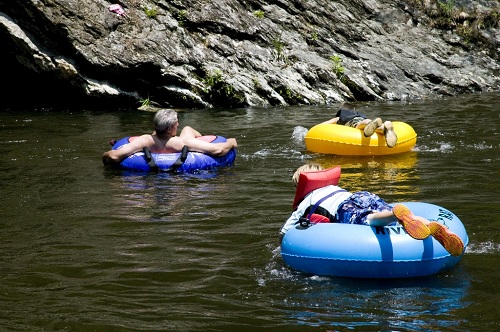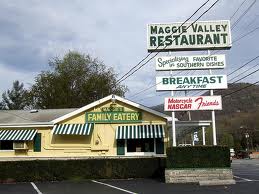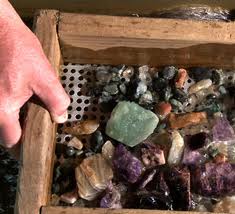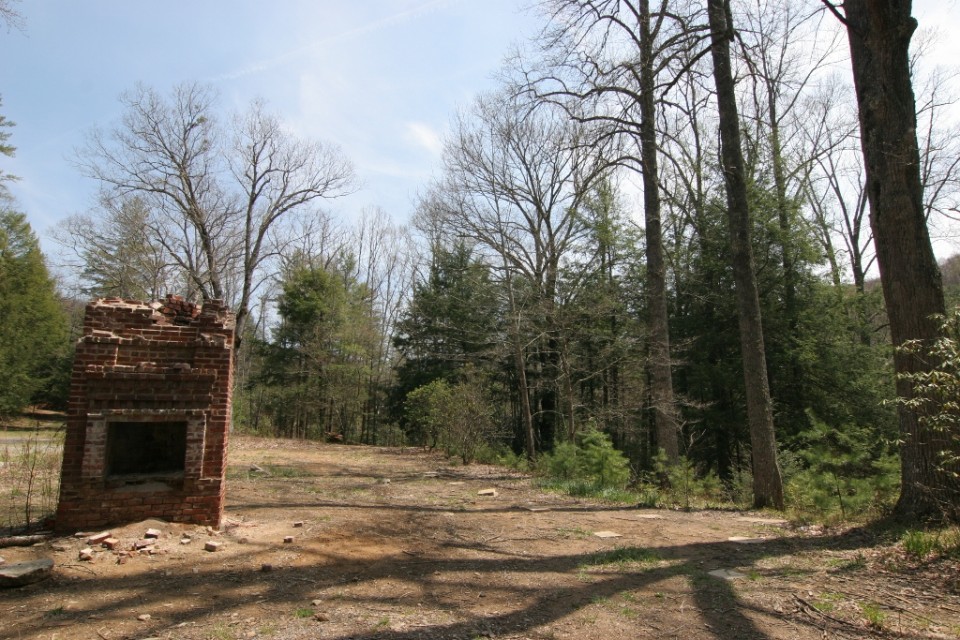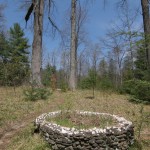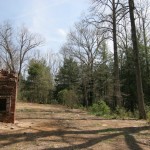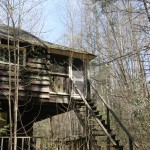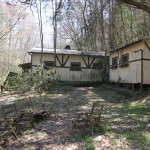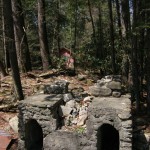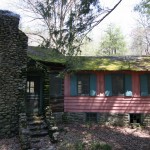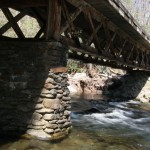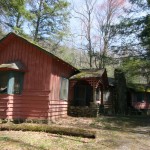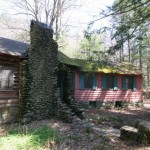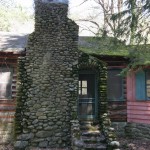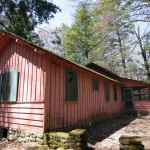The Three Rivers Rambler is a train excursion that runs along to the Tennessee River. This 90 minute train ride starts from the waterfront near downtown Knoxville and takes you on a ride through the foothills of the Smoky Mountains. You will pass a lot of the history that has formed not only Knoxville but parts of the country as well. The end of the trip is a visit to the Three Rivers Trestle. The Rambler runs on selected weekends and has become a huge draw for the Neyland Drive area of Knoxville,
The Trains
Depending on when you decide to take a ride on the Rambler, you might be pulled by Lindy – the 1925 steam engine or the slightly older 1890 steam engine that they are unveiling in the summer of 2012. There are also times that they use diesel engines to pull the coach cars. These give you an entirely different feel to your train ride as the power of the diesel engines pulls you down the track. While you are onboard the Rambler, you will be sitting in one of the two coach cars that date back to 1932. The various cars of the train are connected and allow you to roam to the open air section fo the train or to the merchandise cars where they sell soft drinks and water; this is also where the restrooms are located.
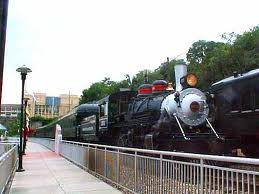 The Trip
The Trip
The 90 minute ride on the Rambler takes you from the waterfront on Neyland Drive past downtown through the foothills of the Smokies and past lush pastoral landscapes and lots of history. As you progress north from the boarding station, you will pass the farmlands that were the first settlements in the area, quarries that actually supplied some of the stone that helped to build Washington DC and many other points of interest. While you travel along, feel free to ask questions of the staff members on board. They are very knowledgeable and they have been asked your questions before. They know the route and will be glad to share their knowledge with you.
The Trestle
The highlight of the trip is a visit to the Three Rivers Trestle. The Rambler takes you to the point where the Tennessee River really begins. The French Broad, after winding its way out of the mountains, and the Holston combine to form the Tennessee River. The Tennessee then continues on its way to the Gulf of Mexico. You actually get to see the point where this new river, the Tennessee, is formed. A highlight that lets you see a stretch of river that powers homes, moves the economy along and of course provides hours of recreation.
The Three Rivers Rambler offers a different way to experience the foothills of the Great Smoky Mountains. You can sit back and enjoy the hour and a half ride through the outskirts of Knoxville, TN while you learn about the history of the city, the area and the country. You also get to view the start of the one of the largest waterways in our country. Try the Three Rivers Rambler out as a day trip the next time you visit the Smokies.
Three Rivers Rambler
2560 University Commons Way
Knoxville, TN 37919
865-524-9411

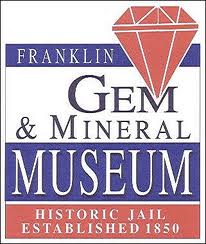
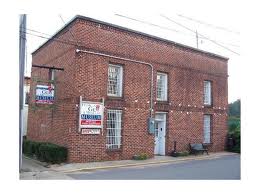 The Franklin Gem and Mineral Society started in 1971. The rockhounds of the area had a close kinship from many hours spent digging for gems in the mountains. It was no wonder that informal get-togethers turned into monthly meetings. In fact, by 1972 there were almost 175 people on the roles of the club. In 1972 they also opened the museum. This museum was a growing collection of the lapidary dreams of the rockhounds of Macon County. With the move into the jailhouse, they were able to expand the collection and improve on the exhibits. The club stills hosts this free museum and it is one of the highlights of any visit to downtown Franklin, NC.
The Franklin Gem and Mineral Society started in 1971. The rockhounds of the area had a close kinship from many hours spent digging for gems in the mountains. It was no wonder that informal get-togethers turned into monthly meetings. In fact, by 1972 there were almost 175 people on the roles of the club. In 1972 they also opened the museum. This museum was a growing collection of the lapidary dreams of the rockhounds of Macon County. With the move into the jailhouse, they were able to expand the collection and improve on the exhibits. The club stills hosts this free museum and it is one of the highlights of any visit to downtown Franklin, NC.
 Kermit Hunter was born in West Virginia. After a time in the US Army in World War II, he went on to manage the North Carolina Symphony. Over time, working with various theatrical companies, Hunter went on to his graduate studies program in Dramatic Arts at the University of North Carolina at Chapel Hill. While he was there several of his plays would be produced by the Carolina Playmaker’s. At this same time, the city of Cherokee started to look for someone to write a dramatic interpretation of the Cherokee people to be performed at an outdoor site in Cherokee.
Kermit Hunter was born in West Virginia. After a time in the US Army in World War II, he went on to manage the North Carolina Symphony. Over time, working with various theatrical companies, Hunter went on to his graduate studies program in Dramatic Arts at the University of North Carolina at Chapel Hill. While he was there several of his plays would be produced by the Carolina Playmaker’s. At this same time, the city of Cherokee started to look for someone to write a dramatic interpretation of the Cherokee people to be performed at an outdoor site in Cherokee.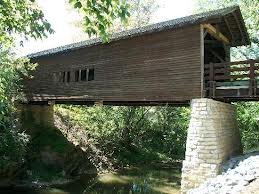

 In modern times, you can visit a Fort Loudon that has been rebuilt to what it might have been like in its heyday. You get to experience the time period and through living history you get to talk to the people that worked the fort. The reenactors and volunteers make this an amazing visit for people of all ages. They not only appear in the clothes that the people of the 18th century would have worn but they are conversant on the topic so f the day, showing crafts and skills that the people of the garrison and the communities around the fort would have possessed. If you are really interested in that time period then you might want to plan your visit to the historic site for one of the Garrison Weekends that they have throughout the year. On those weekends, they have crafters and vendors come in with 18th century materials and they also have a mock battle between the British from the fort and the French and Indians that would raid the fort sometimes on a daily basis.
In modern times, you can visit a Fort Loudon that has been rebuilt to what it might have been like in its heyday. You get to experience the time period and through living history you get to talk to the people that worked the fort. The reenactors and volunteers make this an amazing visit for people of all ages. They not only appear in the clothes that the people of the 18th century would have worn but they are conversant on the topic so f the day, showing crafts and skills that the people of the garrison and the communities around the fort would have possessed. If you are really interested in that time period then you might want to plan your visit to the historic site for one of the Garrison Weekends that they have throughout the year. On those weekends, they have crafters and vendors come in with 18th century materials and they also have a mock battle between the British from the fort and the French and Indians that would raid the fort sometimes on a daily basis.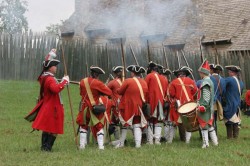 Of course, this is also a
Of course, this is also a 
